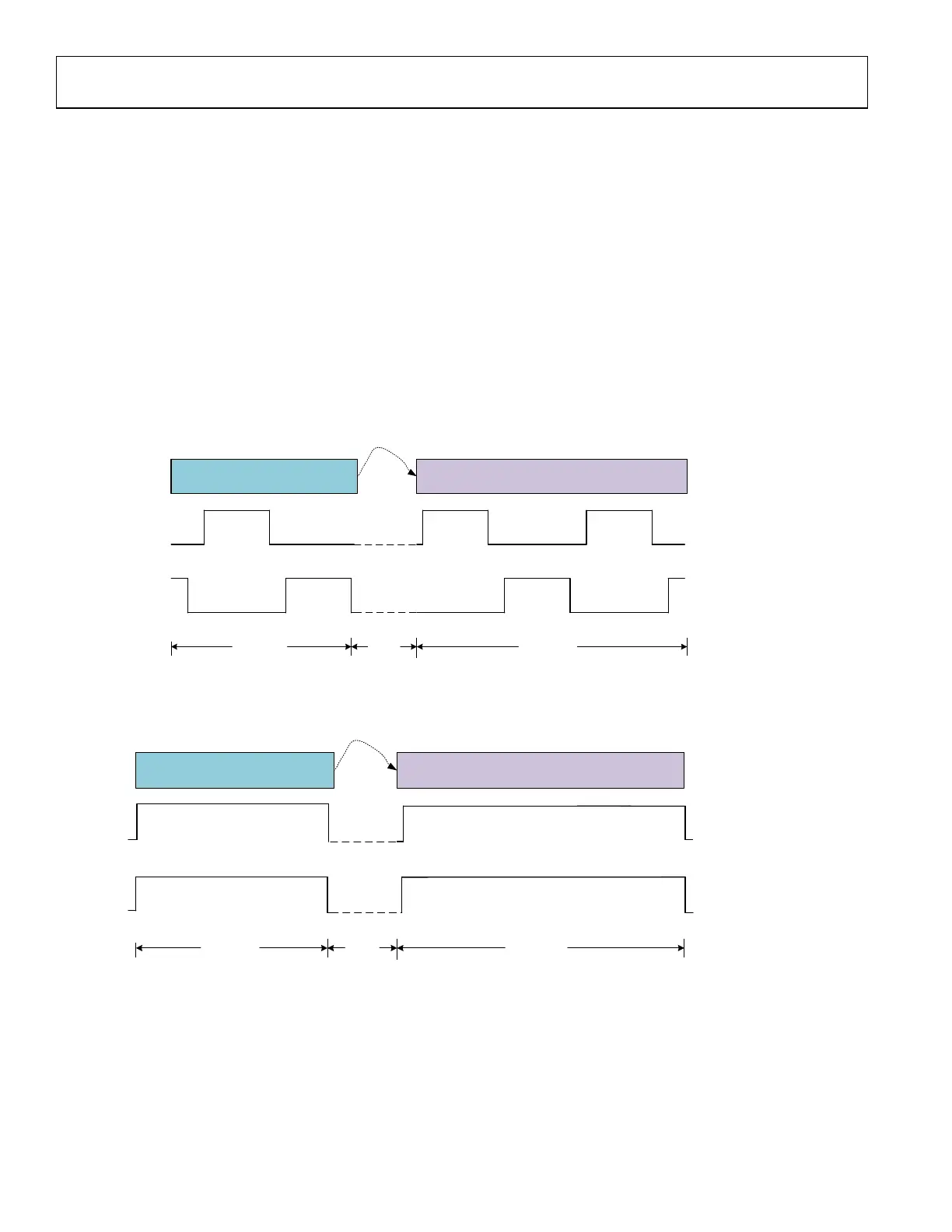UG-1828 Preliminary Technical Data
Rev. PrC | Page 216 of 338
DYNAMIC PROFILE SWITCHING
OVERVIEW
Dynamic Profile Switching (DPS) is a feature supported by ADRV9001 to allow user to switch among several predefined profiles with
different signal bandwidth and sampling rate on the fly. With a switching time of about 50us, DPS enables a very fast change to a different
profile without the need to reinitialize the chip. However, the signal bandwidth and sampling rate of different profiles must satisfy a
relationship of being a multiple integer of 2 between each other. In addition to that, all profiles must be wideband profiles with a signal
bandwidth no less than 1MHz. For example, the set of LTE profiles including the sampling rate of 61.44MSPS, 30.72MSPS, 15.36MSPS,
7.68MSPS, 3.84MSPS and 1.92MSPS satisfy the requirements, therefore, users can perform DPS on those profiles. Note in the current
release, this is the only set of profiles supported by ADRV9001 for DPS. In future releases, other profiles might be added with a limitation
of the maximum total number of profiles to be 6.
ADRV9001 supports DPS for both TDD and FDD operations. When performing switching, BBIC should first switch all channels from
“RF enabled” state to “Primed” state. In the current release, the new profile is applied on all the configured Tx and Rx channels
simultaneously so DPS could not operate on channels individually. Figure 201 depicts a high-level diagram showing the DPS operation in
a TDD system and Figure 202 depicts a high-level diagram showing the DPS operation in an FDD system, respectively.
LTE 61.44MSPS
LTE 1.92MSPS
Tx_enable
Rx_enable
Profile Switching
Channel State
Profile
RF Enabled
RF Enabled
Primed
Figure 201: DPS Operation in TDD system
LTE 61.44MSPS LTE 1.92MSPS
Tx_enable
Rx_enable
Profile Switching
Profile
RF Enabled
RF Enabled
Primed
Figure 202: DPS Operation in FDD system
INITIAL CALIBRATION WITH DPS
From ADRV9001 point of view, a dynamic profile change is considered as a change in signal bandwidth and sampling rate relative to a
main profile through changing decimation/interpolation settings in the data path and Rx PFIR coefficients. For the set of LTE profiles
currently supported, LTE 61.44MSPS with the highest sampling rate is considered as the main profile. During the initialization, user
enables DPS by configuring more than 1 profile. Note in the current implementation, user is only allowed to configure all 6 LTE profiles
for DPS. In the future, if user sets the number of profiles to be N which could be between 2 to 6, then DPS is enabled and the N profiles
from the highest sampling rates to lower sampling rates in order are configured for DPS. For example, if user sets the number of profiles

